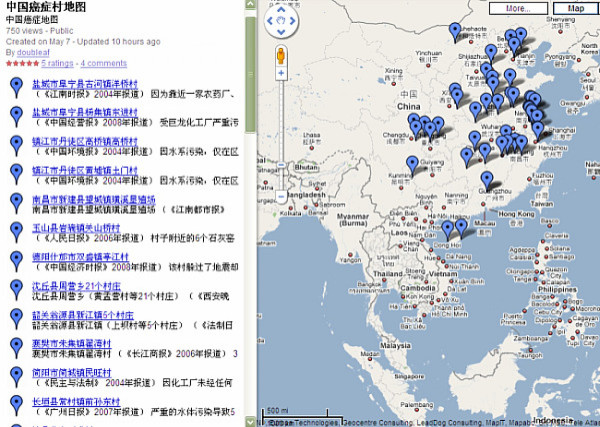Chinese Officials Admit 'Cancer Villages' Due To Pollution Exist
According to Chinese business magazine Caijing, Chinese officials with the Ministry of Environment Protection confirmed the existence of cancer villages in a statement announcing plans to alleviate pollution and its harmful side effects.
“The toxic chemicals have caused many environmental emergencies linking to water and air pollutions,” the ministry announced. “There are even some serious cases of health and social problems like the emergence of cancer villages in individual regions.”
The ministry said it planned to “guard against and control risks presented by chemicals to the environment during the 12th 5-Year period (2011-2015).”
Many believe the nation’s persistent environmental issues are a result of China’s rapid growth, especially with large-scale factory production fueled by coal-fired power plants. The ministry said that the levels of industrial production that occur in China would be forbidden in many other developed countries but can still be found in China, adding that the nation has now even become a proposed destination for those looking to continue environmentally unfriendly production.
Mainland China’s cancer rates have been surging since the 1990s, becoming the nation’s biggest cause of death. In 2010, an investigative journalist and environmental activist, Deng Fei, posted a widely circulated map of China’s cancer villages. Deng Fei was able to map out more than 100 cancer villages, covering 27 provinces. Research by other academics and news organizations suggests that a more realistic estimate would be upwards of 400.

For those doubting that pollution was an influence in creating cancer villages, Deng Fei’s map also detailed the proximity in which factories were to residents diagnosed with cancer. The Dongjin village, for example had 100 villagers die of esophageal and lung cancer between 2001 and 2006, while there was heavy pollution from the nearby Julong chemical factory.
“Villagers brought a lawsuit against the chemical factory, but each person would only receive a 70 yuan [$11] payment,” the report read.
Another report on 21 villages in Xi’An found that half of the collective deaths over a 14-year period (1990-2004) were caused by cancer. “Cancer developed as a result of industry on the waterfront and uncontrolled discharge of sewage.”
Deng Fei continues to publicize pollution problems across the nation by posting on Weibo, China’s Twitter-like social media platform.
Earlier this week, Deng told his Weibo followers to take advantage of being in their hometowns for the Spring Festival holiday and take a picture of their local rivers and lakes. He received an overwhelming amount of photos of polluted water sources, garbage-infested rivers and reports of chemical dumping from different areas of China.
Air and water pollution has quickly become a hot-button topic as international news media picked up on reports of toxic air levels in Beijing in early January. Readings for toxic particles PM2.5 exceeded the designated scale several days in a row, alarming many of the city’s residents.
© Copyright IBTimes 2024. All rights reserved.






















